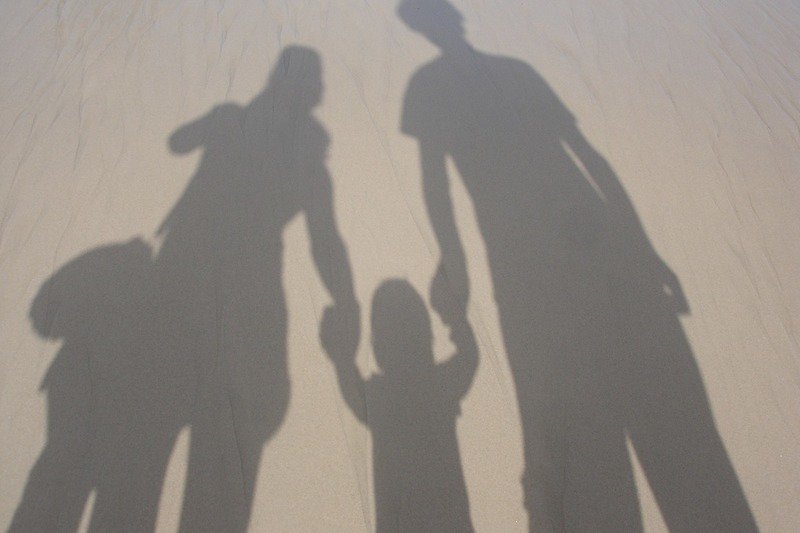Analysis Written by Father John Flynn:
***
Divorce, remarriage and cohabitation are on the rise in the United States, at the cost of the traditional two-parent family structure.
An overview of the latest data was published shortly before Christmas by the Pew Research Center. The study, “Parenting in America,” also showed a decline in fertility.
“As a result of these changes, there is no longer one dominant family form in the U.S. Parents today are raising their children against a backdrop of increasingly diverse and, for many, constantly evolving family forms,” the study noted. This can be seen from the following data.
+ In 1960 73% of children lived with two married parents in their first marriage. Today only 46% are in this situation.
+ Currently 67% of people younger than 50 who had ever married are still in their first marriage. In comparison, that share was 83% in 1960.
+ One study that found during a three-year period 31% children younger than 6 had experienced a major change in their family or household structure. This took the form of parental divorce, separation, marriage, cohabitation or death.
+ Fully one-fourth (26%) of children younger than age 18 are now living with a single parent, up from just 9% in 1960 and 22% in 2000. The share of children living without either parent stands at 5%; most of these children are being raised by grandparents.
+ In 1960, just 5% of all births occurred outside of marriage. By 1970, this share had doubled to 11%, and by 2000 fully one-third of births occurred to unmarried women. Non-marital births continued to rise until the mid-2000s, when the share of births to unmarried women stabilized at around 40%.
+ While still a fairly recent trend the increasing incidence of cohabitation is having an increased impact. Today 7% of children are living with cohabiting parents, according to the Pew study. Despite this relatively small number a much larger group will be affected by cohabitation at some point during their childhood.
+ The study cited estimates that about 39% of children will have had a mother in a cohabiting relationship by the time they turn 12; and by the time they turn 16, almost half (46%) will have experience with their mother cohabiting.
Racial and ethnic differences
There are some significant differences when the family structures are broken down according to ethnic background. Among black women, 71% of births are now non-marital, as are 53% of births to Hispanic women. In contrast, 29% of births to white women occur outside of a marriage.
Asian children are the most likely to be living with both parents—fully 84% are, including 71% who are living with parents who are both in their first marriage, according to the Pew Center study.
Only 13% of Asian kids are living in a single-parent household, while 11% are living with remarried parents, and just 3% are living with parents who are cohabiting.
Of white children, 78% are living with two parents, including 52% with parents who are both in their first marriage and 19% with two parents in a remarriage; 6% have parents who are cohabiting. About one-in-five (19%) white children are living with a single parent.
Regarding Hispanic children, around two-thirds live with two parents. All told, 43% live with two parents in their first marriage, while 12% are living with parents in a remarriage, and 11% are living with parents who are cohabiting. Some 29% of Hispanic children live with a single parent.
The situation of black children contrasts greatly compared to the other major racial and ethnic groups. The majority – 54% – are living with a single parent. Just 38% are living with two parents, including 22% who are living with two parents who are both in their first marriage. Some 9% are living with remarried parents, and 7% are residing with parents who are cohabiting.
Education and family
Another major influence on family structures is the level of educational attainment. Children with at least one college-educated parent are far more likely to be living in a two-parent household, and to be living with two parents in a first marriage, than are kids whose parents are less educated.
Fully 88% of children who have at least one parent with a bachelor’s degree or more are living in a two-parent household, including 67% who are living with two parents in their first marriage.
In comparison, some 68% of children who have a parent with some college experience are living in a two-parent household, and just 40% are living with parents who are both in a first marriage.
About six-in-ten (59%) children who have a parent with a high school diploma are in a two-parent household, including 33% who are living with parents in their first marriage. Meanwhile, just over half (54%) of children whose parents lack a high school diploma are living in a two-parent household, including 33% whose parents are in their first marriage.
For many years now commentators have expressed concern over the breakdown of traditional family life. The latest information provides little hope that the situation will be reversed.



